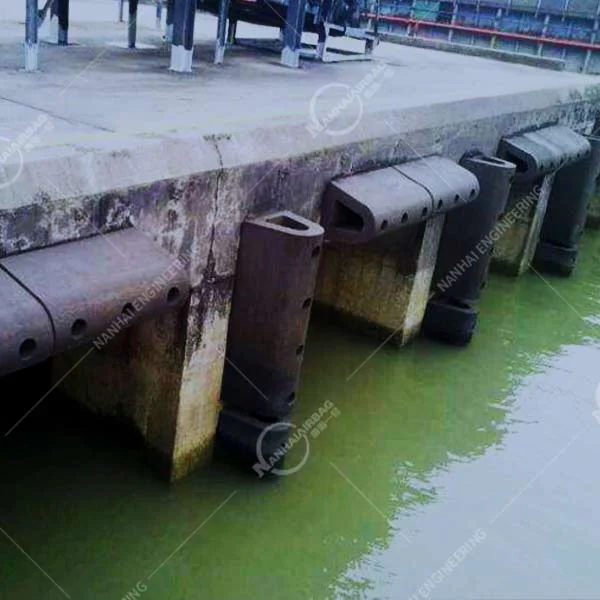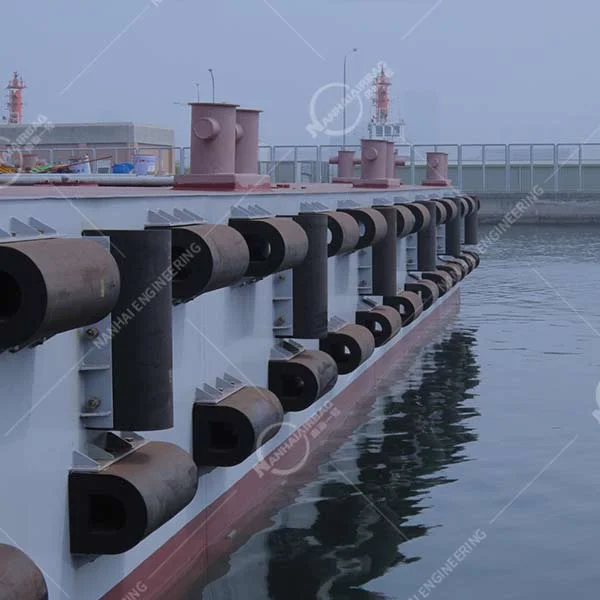Super Cell Fenders: The Heavy-Duty Guardians of Maritime Safety
15/05/2025Pneumatic Fenders: The Air-Powered Shields for Modern Harbors
22/05/2025


Ever wondered how ships dock safely without scratching docks or causing costly damage? The secret lies in jetty rubber fenders. These heavy-duty barriers are lifesavers for ports, marinas, and harbors. Let’s explore why they’re essential—and how they keep your dock (and wallet) safe.
🔥 Featured Snippet Alert: What Are Jetty Rubber Fenders?
Jetty rubber fenders are specialized marine fenders made from high-density marine rubber fenders. Installed along docks, piers, or jetties, they act as shock absorbers, dissipating the energy of ships docking or swaying in rough waters. Their flexible design prevents scratches, cracks, and collisions that could damage vessels or harbors.
Why This Matters: Why Ports Can’t Afford Cheap Fenders
Imagine a stormy night where a cargo ship drifts into a marina. Without sturdy jetty rubber fenders, the impact could rip apart wooden docks, puncture hulls, or spill fuel into sensitive ecosystems. Here’s the urgent reality:
- Real-World Disaster: In 2023, a ferry collided with a poorly protected jetty in Norway, flooding the marina and forcing evacuations. Repairs cost $8M.
- Environmental Threats: Cracked hulls risk oil leaks, devastating marine life.
- Financial Losses: Dock repairs can halt shipping for weeks, costing businesses millions.
Cheap or worn-out fenders fail. Jetty rubber fenders are a small investment to avoid catastrophic losses.
🚢 How Do Jetty Rubber Fenders Work?
Think of them as giant sponges. When a ship docks, its kinetic energy pushes against the rubber fender. The material compresses, absorbing the shock and converting it into harmless heat. This prevents:
- Dock Damage: No more splintered pilings or cracked concrete.
- Ship Repairs: Protects hulls and propellers from scrapes.
- Downtime: Keeps ports running smoothly.
Pro Tip: Pair them with mooring lines for double the protection!
🌟 Types of Jetty Rubber Fenders (And Which to Choose)
Not all rubber fenders are the same. Match them to your port’s needs:
1. Standard Jetty Rubber Fenders
- Best For: Small to medium boats, quiet harbors.
- Pros: Affordable, easy to install.
2. High-Density Marine Rubber Fenders
- Use Case: Heavy-duty cargo ships or harsh climates.
- Bonus: Resists UV rays, saltwater, and freezing temps.
3. Arch-Shaped Fenders
- Advantage: Saves space in compact docks while handling big impacts.
💡 Why Upgrade to Premium Jetty Rubber Fenders?
- Cost Savings: Prevent one collision and save $100k+ in repairs.
- Eco-Friendly: Slash spill risks by 90%.
- Reputation: Safe ports attract more shipping business.
🔍 People Also Ask (Related Questions)
- “Are jetty rubber fenders the same as marine fenders?”
Yes! “Marine fenders” is a broader term, but jetty rubber fenders are a type designed specifically for docks. - “How long do jetty rubber fenders last?”
With proper care, 10–15 years. Inspect yearly for cracks or wear. - “Can I use rubber fenders for offshore oil rigs?”
High-density marine rubber fenders work for extreme conditions, including oil rigs. - “Do I need professional installation?”
Absolutely. Poorly installed fenders can fail under pressure.
🛠️ Ready to Protect Your Marina?
Jetty rubber fenders aren’t just an accessory—they’re a necessity. Whether you’re upgrading an aging dock or building a new marina, these fenders save money, time, and the environment.
Need help choosing? Ask our experts below! 👇
Secure Your Dock Today → Explore Marine Rubber Fenders
Keywords used: marine fenders, ship fenders, marine rubber fenders, jetty rubber fenders.
